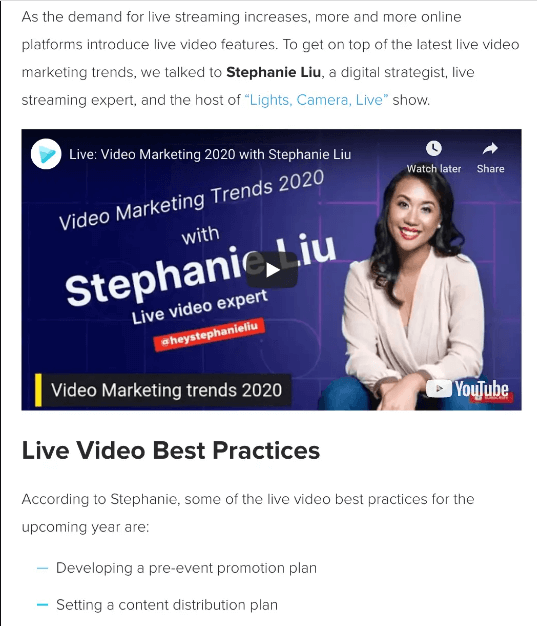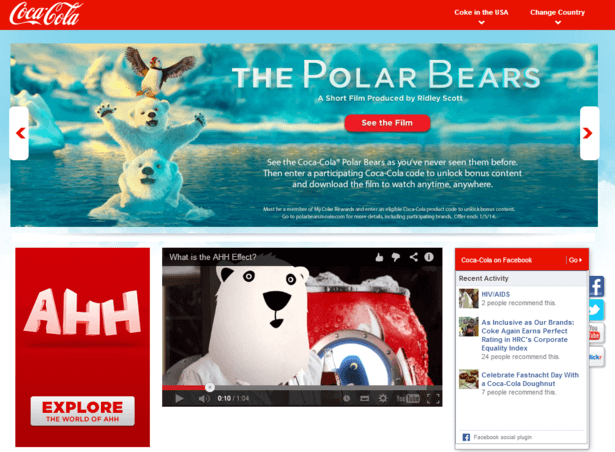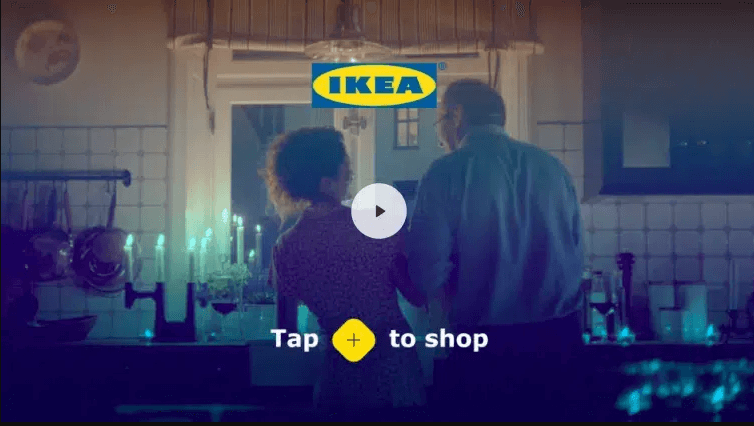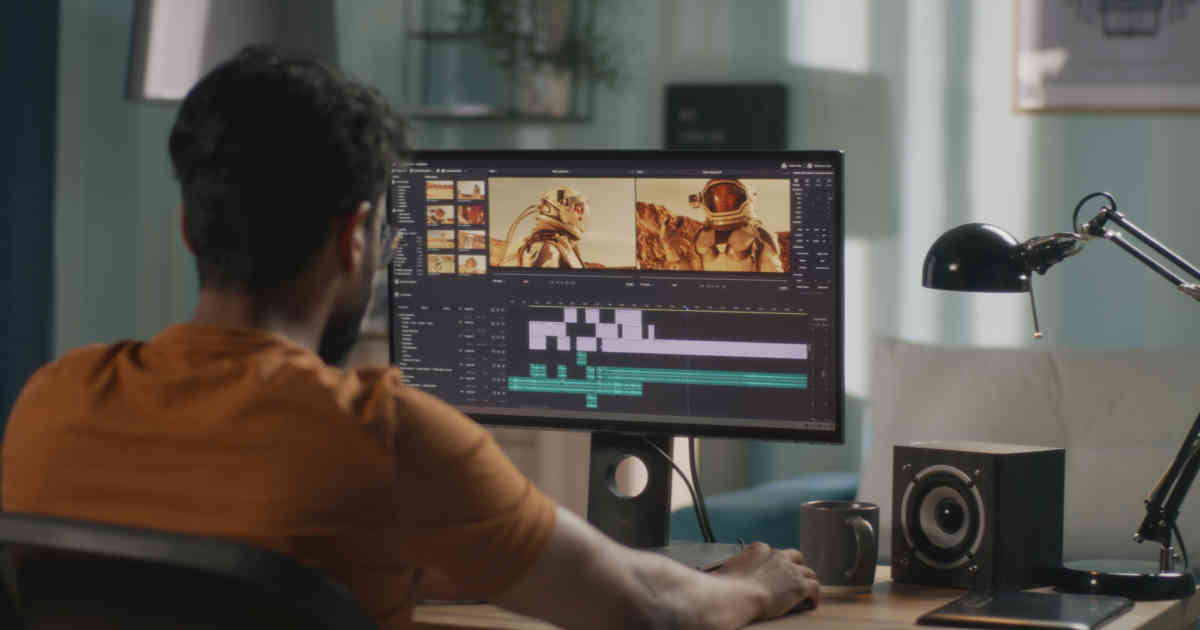In the modern, digital age, video content is a very important asset. It enables you to cram a substantial quantity of information into a click that is interesting to the user. In addition, audiences receive all of the information that they require in a condensed amount of time. As a result, the majority of individuals choose to consume content in the form of videos.
People perceive content presented in video formats to be entertaining, engaging, and personally relevant. Nevertheless, the production of videos requires an investment of time, resources, and labour. It’s possible that most people who run businesses don’t have a lot of these lying around. The ability to repurpose video content comes in handy in this situation.
When talking about video material, “repurposing” refers to the process of taking a single video, giving it a new makeover, and uploading it to different channels and social media platforms. When you take a lengthy video that you uploaded to YouTube and cut it up into numerous shorter videos, you are engaging in the practice of repurposing your content for use on Facebook and other social media channels. Hence, repurposing video content can be done in a variety of different ways.
Why Should You Repurpose the Video Content You Have Already Created?
The most significant advantage of recycling old videos is the amount of time it will save you. Based on an article, there are around 38% of marketers, the most time-consuming aspect of video creation is the pre-production phase, which includes brainstorming, scripting, and casting. You can reuse your films so that you have many clips available to post on various social media platforms rather than having to create an entirely new video for each one.
Second, by finding new uses for previously created video material, you give that content a fresh lease on life. There is no longer a need for you to allow your films to collect dust on a shelf or in the archives of a single social platform. When you remove them and remodel them, you give them a new function in the overall scheme of things.
Repurposing your videos enables them to be viewed by a greater number of people while also attracting the attention of your intended audience. About one-third of marketers think that expanding their reach to new audiences and raising more people’s knowledge of their brand is their top priority with video marketing.

In addition, the videos that you posted before your new followers discovered your brand will now be viewable by those followers once they do discover your brand. Reusing something can, in the end, help you save money, which is always a plus. The process of reformatting and recycling your movies is a huge aid when it comes to optimising your spending on marketing and your budget.
The entire process of creating a video, from coming up with an idea to recording and editing it, requires less time and money than it used to. Because of this, the video marketing campaigns that you run for your company will be more successful and efficient.
Repurposing Your Video Content in 5 Different Ways
The marketing and content industries are currently being led by video as the industry superstar. Given how popular TikTok has become, it is reasonable to conclude that material in the form of videos will be around for the foreseeable future. The algorithms that are used by social media companies are undergoing changes that will prioritise video content over other sorts of material.
Video is regarded as the most valuable kind of content for reaching social goals by approximately 54% of marketers, who feel that video is the most effective format. Consequently, finding new uses for old movies might be an efficient way to help you meet your business objectives.
Transform your videos on YouTube into blog posts
You’ve just finished producing an interesting, informational film. There must be more individuals than simply those who follow your channel who can see all of that work and effort. One way to successfully reach new audiences is to turn the video into an equally compelling blog piece.
Do not fret. Nothing has to be copied word for word. Write a brief summary of the key points and then expand on them. You can use Google Docs or Rev to turn your YouTube videos into blog posts if you don’t have the time to do it yourself.
Make sure you thoroughly examine the draught blog and use the original video in the finished article to gain the most attention. Make sure to optimise the text using pertinent keywords, headings, and subheadings to drastically raise your SEO rankings.
You might want to consider writing blog posts in addition to your live streams. As an illustration, the website, Wave.video, transformed its live interview video into a blog, as was seen earlier. Notably, the blog post also includes the embedded version of the video that was first uploaded.

Making your films into blog pieces assures that they will continue to be current and valuable to viewers even as time passes, regardless of the strategy that you choose.
Include Social Media Videos on Your Website
The videos that you upload to social media could end up being beneficial to your website. You have the ability to reuse the video content that you have previously used on social media by adding the videos to appropriate portions of your website, such as your website’s landing page, gallery, about page, testimonials section, or other relevant sections.
This can be accomplished in one of three ways. You have the option of directly uploading a video to your website, embedding a video from a social media platform such as YouTube or Vimeo, or linking to an external video. The user will be pulled away from your website and brought to a website that streams videos, such as YouTube when you connect them to a video. This is one of the disadvantages of connecting to a video.
However, if you post movies to your website directly, it can take longer for visitors to see them. As a result, embedding is almost always the recommended method. It extends the amount of time that site users are able to spend watching movies hosted on your website. You should also make sure that your website loads quickly so that users have a positive experience when they visit it.

As was just demonstrated, embedding gives you the ability to circumvent the bandwidth restrictions imposed by your server. You are also able to keep the quality of the original video without having to have it shrunk in order to conform to the requirements of the website. People are more likely to spend more time on a website that features videos.
Repurpose the videos you’ve posted to social media to increase the number of people who see them and your site’s rating in search engine results pages.
Convert Videos into a Webinar Presentation
A video that is rich in information and commentary on a particular niche subject can serve as the basis for a webinar presentation. It is possible that the audience you are trying to reach did not watch the previous video. As a consequence of this, promoting it as a webinar will pique the curiosity of viewers and expose it to a larger audience than before.
It’s possible that the video will require some tweaking in order to compete in the market. Carry out some research and compile a list of pertinent information and up-to-date statistics so that you may include them in the webinar. In addition, you may include examples from modern times in order to give the impression that the information being presented is more pertinent.
You will be able to retarget prior video viewers who are among your followers if you use this new data in your strategy. The content of each and every video that people watch online should be beneficial to them. In exchange for their willingness to invest their time in your brand, you should supply them with information that is of value to them.
Make interactive videos that may be shopped
Videos that are designed as interactive shoppable are ones that incorporate things that may be purchased using in-video links to make the viewing experience more engaging. When a viewer clicks on a segment of the video that they find appealing, they are transported to the website of the retailer, where they are given the opportunity to purchase the product. They are able to carry out any activity without ever having to navigate away from the video page.
Because they are interactive and generate leads, these videos reduce the amount of work that the customer must do to purchase what they require. Your movies can be altered once more and embedded links can be added to them in order to make them sellable.
Shoppable videos provide you with the ability to move quickly and seize an opportunity, both of which can work to your advantage. You can achieve the highest possible level of success by hosting your webinar on any one of the most popular platforms.

For example, the above video from IKEA includes a “+” symbol that allows viewers to pause the experience, get additional information about a product, and possibly make a purchase of that product.
You are able to make videos that can be shopped on platforms such as Instagram, TikTok, Amazon Live, and Popshop Live. You can also put shopping links in your films. YouTube has recently introduced a bunch of brand-new features, one of which is a new section for shoppable videos. Make use of these platforms to find out which of your films are the most successful for your business and to repurpose your existing films.
E-commerce businesses rely heavily on shoppable videos to promote their wares and attract customers. Even said, proprietors of other businesses shouldn’t let this stop them from making use of such a valuable resource.
Make digital and printable versions of the guides
In exchange for their email addresses, your audience has the option of downloading printed or digital versions of your instructional videos directly from your website. This is an excellent strategy for growing your email list while also providing valuable materials to your audience at the same time. Taking screenshots of the instructions in your video and compiling them into a printable or digital guide is an easy way to get started.
Printables are all types of digital content, including images, text, infographics, and other designs, that may be downloaded electronically. Printables are becoming increasingly popular, and some examples of popular printables include calendars, stickers, phrases, and art prints. They are not prohibitively expensive and can sometimes be downloaded for free from the website.
On the other hand, digital guidelines are also sometimes referred to as customer support guides. They are written documents that you post on your website in order to help customers comprehend how to make use of the products or services that you offer.
It is optimal to provide individuals access to information in as many forms as you can since various people prefer to absorb content in different ways. Therefore, it is ideal to give individuals access to information in as many formats as you can. The production of digital and printed instructions attracts the attention of individuals who would rather read than watch a video.
Conclusion
The greatest approach to give your old videos new life is to repurpose them. When you reuse existing video content, you reduce the amount of time, money, and effort needed to produce a completely new video.
Your movies can be modified for Pinterest use. You may leverage your YouTube videos to create interesting blog content. For usage on Instagram Reels, make quick clips and edit them into a vertical position. Create captivating teasers to raise interest in your product videos. Additionally, you may make video advertisements using client reviews.
Utilize your existing social media videos to update your website. Utilizing snippets that are rich in the video can help you gain exposure. Finally, create printable or digital instructions from your videos to expand your email list.















